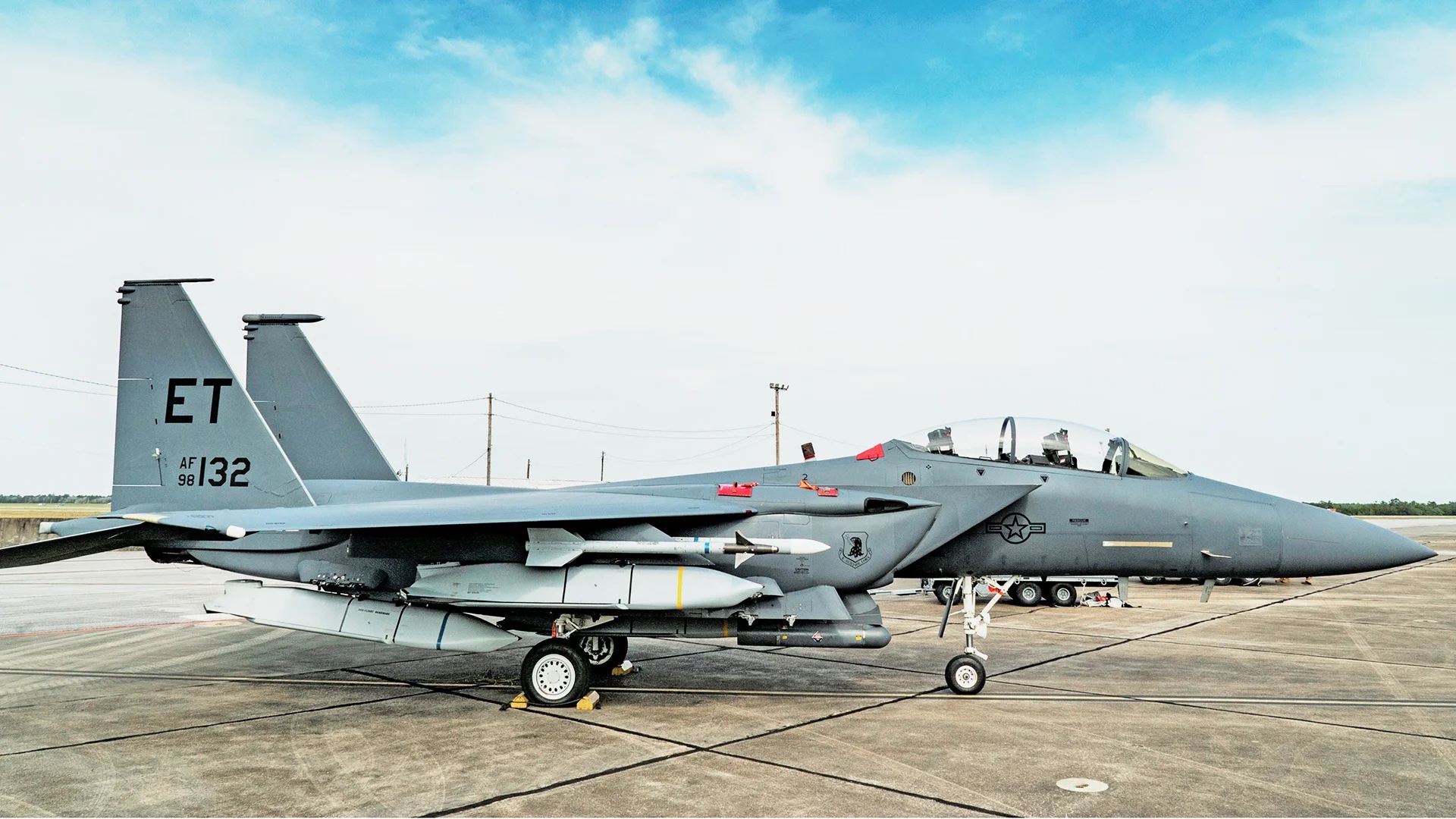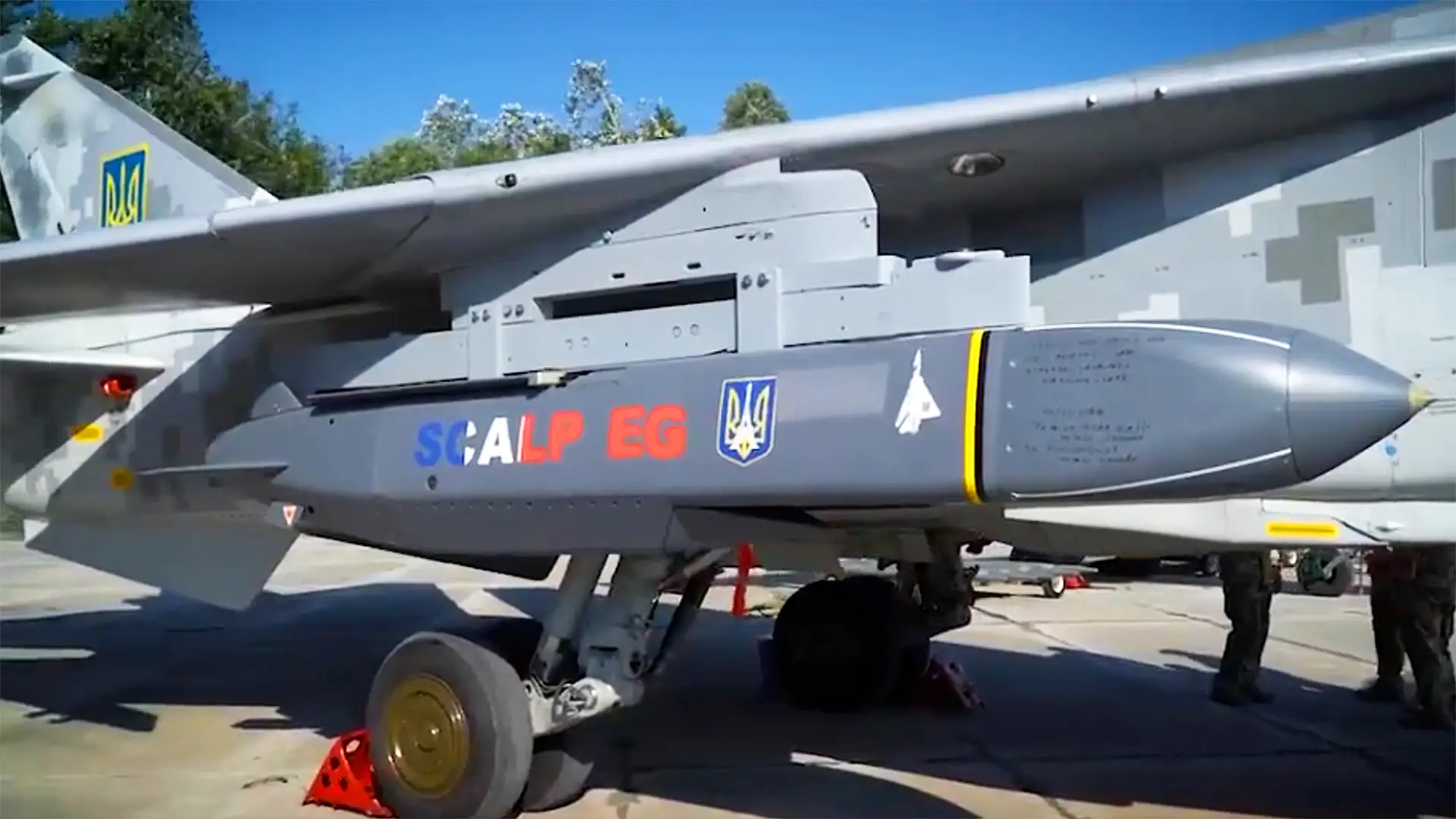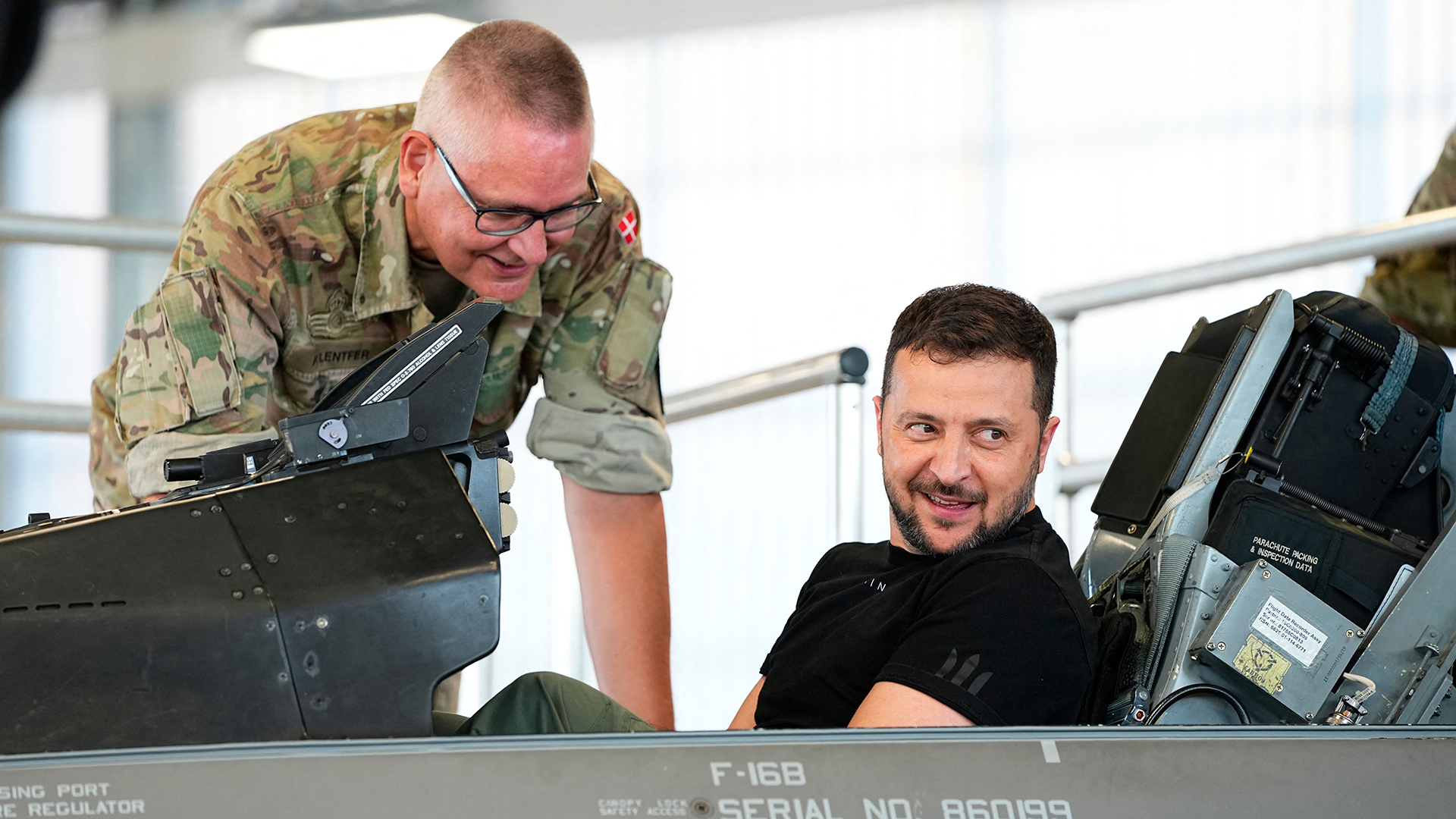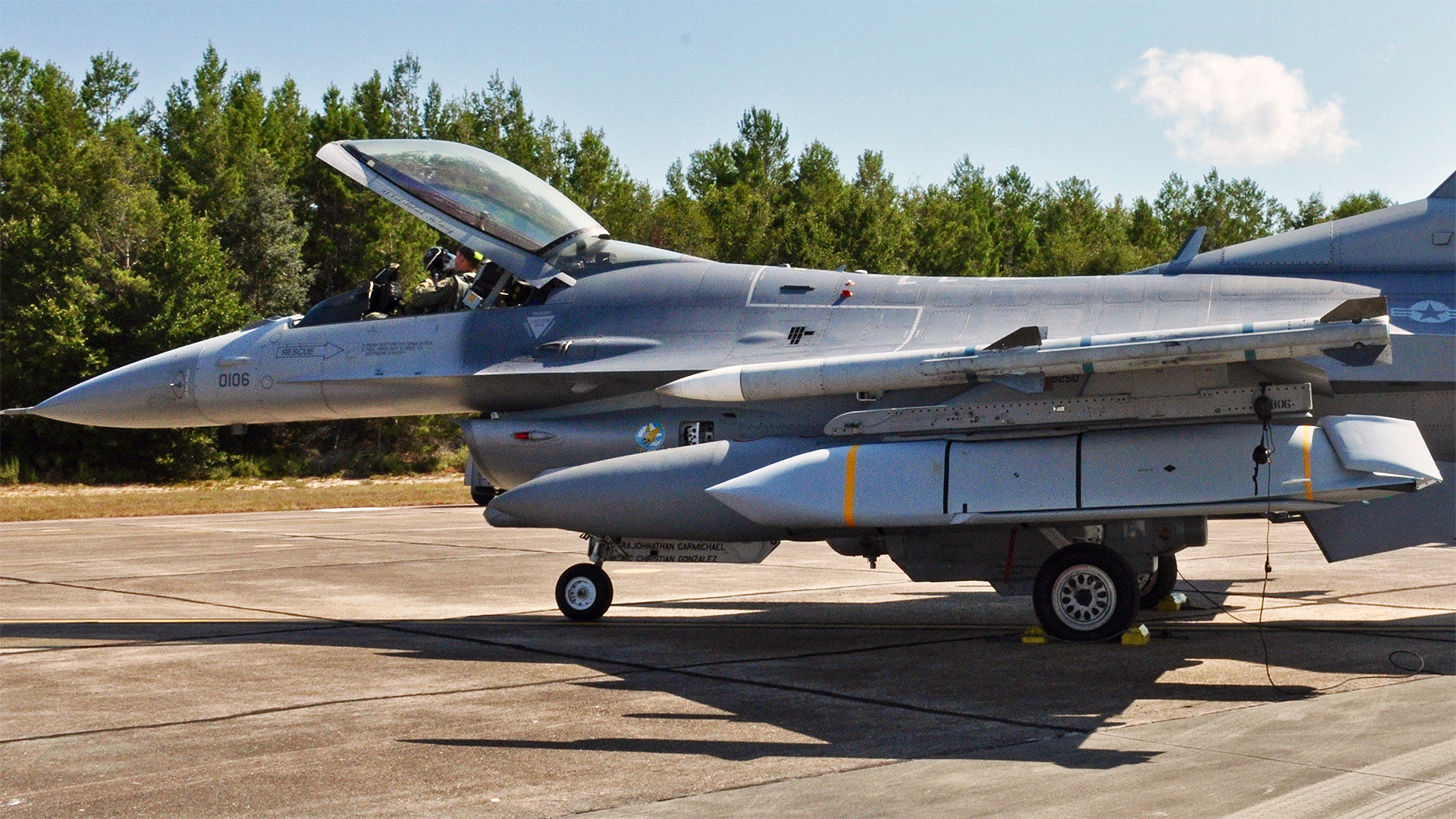An undisclosed type of air-launched cruise missile with a range of up to 300 miles will be among the munitions delivered to Ukraine alongside its long-awaited F-16 fighters, according to Lt. Gen. Serhii Naev, the commander of the Joint Forces of the Armed Forces of Ukraine.
In a statement reported by the Ukrainian RBC news outlet, Naev said that the deliveries of F-16s were expected to be accompanied by air-to-ground missiles to arm them, with a range of “300-500 kilometers” — 186 to 310 miles. Naev added that the weapons were expected to arrive in “further military aid packages,” but provided no more details.

Back in the summer of last year, when the idea of Ukraine getting F-16s finally became a more concrete reality, we looked at the extensive ‘menu’ of possible air-to-ground and air-to-air munitions to arm these aircraft.
What is especially notable about Naev’s claim, however, is the stated range of 186 to 310 miles — a significant distance. Exactly what missile he is referring to isn’t clear, but among the likely candidates that fits that description is the AGM-158 Joint Air-to-Surface Standoff Missile or JASSM.

In its initial AGM-158A form, the JASSM has a range of around 330 miles and weighs 2,250 pounds. The extended-range AGM-158B variant, or JASSM-ER, has a publicly stated range of at least 575 miles. An even longer-range version of the JASSM is in the works, but this has not been fielded yet by the U.S. military.

Although in service for some 20 years, JASSM remains a very sophisticated weapon, with significant low-observable (stealth) characteristics that add dramatically to its survivability. Full of complex and classified technologies, this air-launched cruise missile, even if supplied in its oldest form, would be a massive leap in capability for Ukraine. It would be especially useful for deeply penetrating the dense Russian air defense overlay that sits atop occupied territories in Ukraine.
While the U.S. has exported JASSM widely to key allies, handing it over to Ukraine to be used against a major foe, and having the possibility of it falling into enemy hands, remains a questionable proposition. Yet at this point, considering similar escalation in high-end weaponry provided to Ukraine, it certainly is possible.

Another long-range weapon integrated on the F-16, but less well known, is the AGM-84H Standoff Land Attack Missile–Expanded Response, better known as SLAM-ER, introduced on Turkish Vipers.
In the past, The War Zone argued that the SLAM-ER could be the most likely U.S.-supplied air-launched cruise missile for the Ukrainian F-16, also bearing in mind its availability in the U.S. Navy inventory and its lower degree of technological sensitivity compared to JASSM. The missile has a range of about 170 miles.

As previously described, the highly accurate SLAM-ER can be used in a fire-and-forget mode against a known target. Alternatively, it can be operated using a ‘man in the loop’ (MITL) control concept. This involves a two-way datalink pod on the launching aircraft that allows the missile to be manually steered by the aircraft’s crew to its final impact point after it makes its way autonomously to the target area. This allows very precise targeting, re-targeting in real-time, and even the ability to engage certain moving targets.
Then there is the U.K.-supplied Storm Shadow, and the similar French-supplied SCALP EG cruise missiles have already been used to significant effect, launched by Ukrainian Su-24 Fencer strike aircraft.

Many observers were surprised at how quickly Storm Shadow and SCALP EG were integrated on a Soviet-era platform. While it’s notable that neither of these weapons has been integrated on the F-16, there may well be time to complete such work before these jets arrive in Ukraine. The missiles should be able to be integrated with relative ease, considering they use the same NATO-standard data bus architecture that’s found on the Viper. The 2,900-pound weapons could potentially be mounted on the inboard wing stations, which can accommodate 3,500 pounds. While the Storm Shadow/SCALP-EG export configurations have a range of around 155 miles, the non-export configurations are roughly double that.
Another European air-launched cruise missile that has been suggested for Ukraine is the German Taurus KEPD 350, although its supply has so far been blocked by the German government. Nevertheless, if the go-ahead were given, the manufacturer, Taurus Systems, says it would take between 12 and 18 months to be integrated onto the F-16. This missile has a stated range of around 500 kilometers (310 miles).
Then there is the possibility that an indigenous weapon could foot the bill. This would most likely be an air-launched variant of the ground-attack-optimized Neptune cruise missile. We have seen no information that Neptune is being adapted for air launch, but it’s worth mentioning it as a possibility, even if remote.
In our previous analysis of potential Ukrainian F-16 weapons, one, in particular, was described as “perhaps the most likely and exciting new advanced weapon Ukraine would receive with its Vipers.” This is the AGM-154 Joint Stand-Off Weapon (JSOW), which could still be a critical tool for these fighters, despite its much shorter range than some other options.

The analysis continued:
“[JSOW] is very well suited for the unique combat environment in Ukraine. It can autonomously glide to its target from over 70 miles away when launched at altitude or over a dozen miles when launched at low altitude. It could be especially useful for target geolocated static/semi-static air defense systems and its imaging infrared sensor it uses for terminal homing is impervious to radio-frequency jamming. It has a very small signature, as well, making it that much harder for Russian air defenses to shoot down.”
Despite being unpowered, its range is sufficient for JSOW to be launched from outside the range of the enemy’s air defense systems. What is more, JSOW is available both with a unitary blast-fragmentation/penetrator warhead (as used by the U.S. military), while earlier versions, which may still be available, can also carry submunitions warheads, a type of payload that Ukraine has already made use of on other U.S.-supplied long-range weapons.

At this point, there has been no confirmation from U.S. officials that an air-launched standoff munition will be included in future arms transfers to Ukraine. But it would clearly make sense as Ukraine seeks to target objectives further from the front lines.
Other longer-range weapons have already been able to bring destruction to Russian command posts and logistic storage sites, as well as air defenses and docked vessels, that were previously outside the range of Ukrainian attacks.
Any new air-launched standoff munitions for Ukraine would likely be used against similar target sets.
As Nayev noted in the same article, the appearance of longer-range systems, including the M142 High Mobility Artillery Rocket Systems, or HIMARS, provided to Ukraine earlier in the conflict, has had a tangible effect on how Russia is able to wage its war, pushing logistical support and command posts further from the front lines.

“This has led to an increase in the logistical burden of transporting ammunition and material resources, the complication of troop management, the loss of offensive capabilities, and the transition to forced defense (and eventually to the ‘gesture of goodwill’ from the right bank of the Dnieper and the evacuation from Kherson,” Naev said.
Nayev’s ironic description of Russia’s “gesture of goodwill” refers to the retreat across the Dnieper River in late 2022, part of a withdrawal of the Kremlin’s forces from the Kherson region in southern Ukraine.
These types of impacts have been repeatedly seen with advanced weapon systems. ATACMS ballistic missiles provided by the U.S. rolled back the menacing threat, at least to a significant degree, from Russian attack helicopters, for instance.
Based on previous patterns, we may well first learn of the identity of any new type of air-launched cruise missile for Ukraine once it starts arming the country’s F-16s.

Whatever the case, the prospect of F-16s taking the war to the Russians in Ukrainian Air Force colors is moving ever closer.
Last month, a senior Pentagon official said that the United States expected the Ukrainian Air Force to achieve initial operating capability on F-16s by the end of this year.
Already, a multinational training effort for Ukrainian F-16 pilots is taking place in the United States and in Europe.
“We are aiming to provide an initial operating capability for Ukraine with its F-16 program in 2024, which would entail trained pilots, the platforms, but in addition, trained maintainers and sustainers, infrastructure, and spare parts, ammunition,” Celeste Wallander, assistant secretary of defense for international security affairs, told reporters on January 24.

As we have discussed in the past, however, working up to even austere initial operating capability is a major task for a country that’s not only at war but has no real experience in daily operations with Western-made, NATO-compatible fighters.
At this stage, the focus is very much on training pilots and maintainers, as well as securing the F-16s themselves, with the jets being sourced from a variety of European nations. So far, Belgium, Denmark, the Netherlands, and Norway have all said they will provide Ukraine with F-16s. The Dutch Ministry of Defense confirmed only today that it would provide another six F-16s to Ukraine, on top of the 18 examples it had already earmarked for the F-16 training center in Romania.
The specifics of how Ukraine will actually take its F-16s to war remain unclear, including what weapons they will be armed with. It’s notable that none of the European partner nations that have committed to providing F-16s to Ukraine arm them with JSOW or JASSM, so these would likely have to come from the United States or another benefactor, regardless. Regardless, the provision of any type of weapons for the F-16s would need to be signed off by Washington.

It has long been expected that once combat-capable, Ukrainian F-16 pilots will use the fighters to try and wrest air superiority over Ukraine, as well as use the aircraft’s superior air-to-air radar and weapons to tackle cruise missiles and drones.
On the other hand, the success that’s already been achieved by the Storm Shadow and SCALP EG, and the limited stocks of both those weapons, could see Ukraine want to push its F-16s into offensive operations sooner rather than later. In that context, the appropriate standoff weapons to arm them would be fundamental. Standoff strike would also be an easily executable mission for new F-16 pilots.
It needs to be remembered, however, that, like other long-range strike weapons provided by Western allies, the F-16 and standoff missile combination will not be permitted for use against targets within Russia’s internationally recognized borders.
Now that Kyiv has secured F-16s, and their arrival in the country might now be counted in months only, it’s understandable that securing weapons for these aircraft is now a higher priority. While there are no other signs that a specific air-launched cruise missile has already been approved for transfer to Kyiv, Nayev’s words clearly point to aspirations to use the F-16 in a long-range strike role, holding yet more critical Russian targets to threat within Ukraine’s borders.
Contact the author: thomas@thedrive.com
